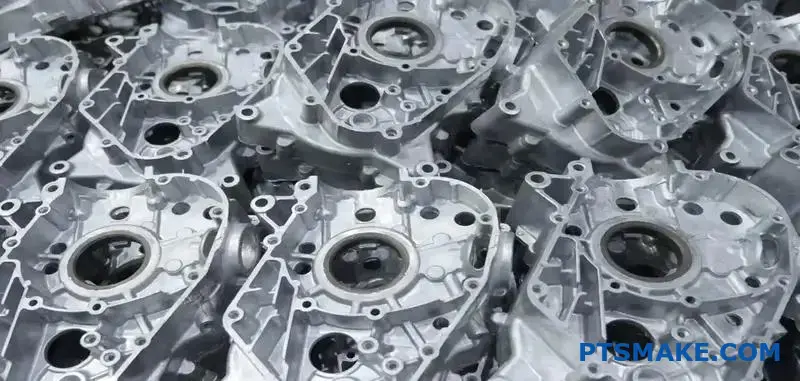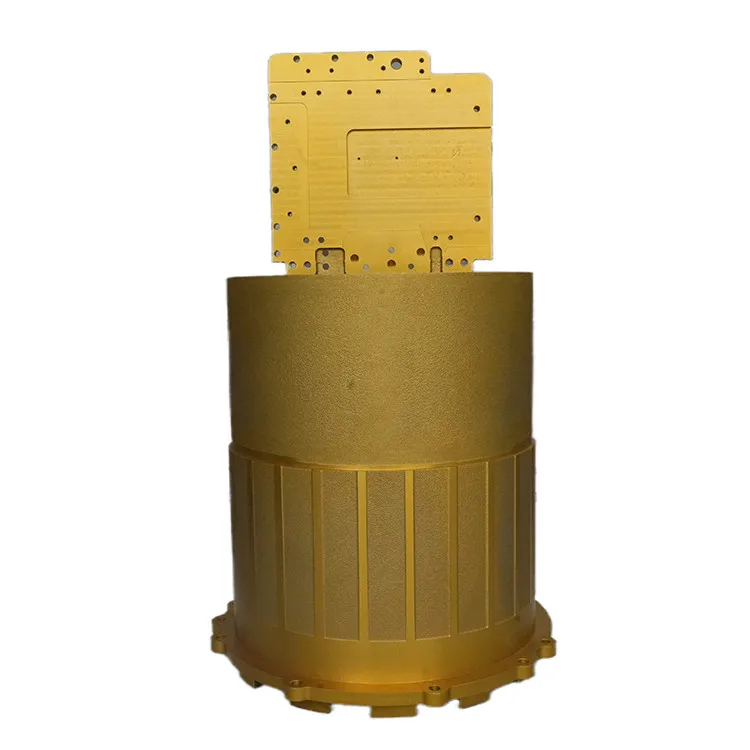Aluminum Casting Techniques: a Deep Study Products and Methods for Success
Aluminum casting methods play an essential duty in production. Different techniques exist, each fit to various applications and demands. Sand casting is preferred for larger elements, while die casting is understood for its precision in high-volume manufacturing. Financial investment casting offers thorough styles with superior surfaces. Recognizing these differences can greatly impact job outcomes. Aluminum Casting Company. Choosing the ideal approach is not constantly uncomplicated, leading to vital factors to consider that must be explored better.
Comprehending Aluminum Casting: A Summary
Aluminum casting is a vital manufacturing process employed throughout numerous industries to produce detailed parts with high precision. This technique involves putting molten aluminum right into a mold, permitting it to take the shape and strengthen of the desired component. The flexibility of aluminum, incorporated with its corrosion-resistant and light-weight residential or commercial properties, makes it an ideal option for applications in automotive, aerospace, and customer goods.
Different casting methods exist, each suited to details requirements and project ranges. Variables such as mold products, cooling rates, and the intricacy of the design play a significant duty in figuring out the most efficient approach. In addition, the residential properties of the aluminum alloy utilized can influence the last product's resilience, surface area, and stamina coating.
Recognizing the fundamentals of aluminum casting enables makers to optimize production processes, lower waste, and guarantee high-grade output, which is vital in today's affordable market.
Sand Casting: Methods and Applications
Amongst the numerous methods used in aluminum casting, sand casting sticks out as a result of its adaptability and cost-effectiveness. This technique includes producing a mold from a mix of sand and binder, which can be formed to suit intricate layouts. Once the mold and mildew is ready, liquified aluminum is put right into it, permitting intricate features and information to be caught.
Sand casting is specifically helpful for generating big parts and low-volume production runs, making it perfect for automotive parts, equipment components, and creative sculptures. The technique additionally suits a variety of aluminum alloys, boosting its versatility in various applications. Additionally, using sand as a mold product permits for easy improvement and reuse, adding to ecologically lasting practices. Nevertheless, attaining high dimensional precision can present challenges, demanding experienced workmanship and cautious control of the casting process. Overall, sand casting stays an essential method in aluminum foundries worldwide.
Die Casting: Precision and Performance
Die casting is an extremely efficient approach of creating aluminum parts with outstanding dimensional precision and surface area coating. This process entails requiring liquified aluminum into a specifically machined mold under high stress, which permits complex layouts and minimal material waste. The fast air conditioning of the alloy within the mold leads to a strengthened part that commonly needs little to no additional machining.
Die casting is specifically helpful for high-volume production runs, where consistency and rate are extremely important. It supports the creation of intricate geometries, making it appropriate for different applications, consisting of vehicle, aerospace, and durable goods.
Moreover, the process can suit different aluminum alloys, boosting the mechanical residential or commercial properties of the finished products. With its ability to create lightweight yet resilient components, die casting attracts attention as a recommended strategy in modern-day production, supplying both precision and performance in aluminum casting.
Investment Casting: Detail and Complexity
Investment casting, also referred to as lost-wax casting, is a accurate and flexible technique for creating complicated aluminum elements. This technique is particularly valued for its capacity to create complex geometries and great information that are often unattainable through other casting methods. The process begins with a wax pattern, which is coated in a ceramic shell. When the shell hardens, the wax is melted away, leaving an in-depth mold for aluminum putting.
The benefits of financial investment casting consist of remarkable surface area coating and dimensional accuracy, lessening the need for extensive machining afterward. It is specifically valuable for little to medium manufacturing runs where precision is crucial. This method suits different aluminum alloys, enhancing its applicability throughout sectors. aluminum casting. Ultimately, investment casting attracts attention for its capability to deliver both visual appeal and useful performance in aluminum parts, making it a recommended choice for developers and designers looking for facility remedies

Choosing the Right Technique for Your Task
Just how can one identify the most appropriate aluminum casting approach for a specific project? The option process depends upon a number of vital variables, including the intricacy of the layout, the preferred surface area coating, and production quantity needs. For intricate layouts, investment casting commonly shows helpful as a result of its ability to capture fine information. Alternatively, sand casting might be favored for larger, less complicated parts, using cost-efficiency and adaptability in manufacturing.
Factors to consider pertaining to resistances and mechanical residential or commercial properties of the final product are vital. For high-performance elements, die casting may be the most effective option, as it offers superior dimensional accuracy and surface high quality. Furthermore, recognizing the product properties and compatibility with the chosen method is essential for making sure the success of the job. Eventually, a detailed evaluation of these factors will certainly lead the decision-making process, leading to one of the most efficient aluminum casting technique for the specific task handy.
Often Asked Questions
What Is the Environmental Influence of Aluminum Casting Techniques?

Exactly How Can I Enhance the Surface Finish of Cast Aluminum?
To enhance the surface finish of actors aluminum, one can utilize techniques such as sandblasting, brightening, and using finishes. Correct mold design and temperature level control also considerably enhance the last surface high quality of the actors product.
What Security Preventative Measures Should Be Taken During Aluminum Casting?
Throughout aluminum casting, crucial security preventative measures include wearing safety equipment, ensuring proper ventilation, making use of fireproof materials, maintaining a risk-free range from liquified metal, and sticking to tools safety and security procedures to avoid accidents and injuries.
How Do I Fix Typical Casting Flaws?
To repair usual casting defects, one should examine the mold for damage, examine the alloy make-up, check putting temperature level, readjust cooling prices, and assurance appropriate airing vent to lessen air entrapment and enhance casting high quality.
What Are the Costs Associated With Various Aluminum Casting Techniques?
The expenses connected with numerous aluminum casting methods vary significantly, influenced by factors such as product expenditures, labor, production, and equipment range. Spending plan factors to consider are essential for picking one of the most suitable casting approach for certain projects.
Sand casting is preferred for bigger elements, while die casting is known for its precision in high-volume manufacturing. Among the numerous techniques utilized in aluminum casting, sand casting stands out due to its versatility and cost-effectiveness. click here Die casting is a very effective method of creating aluminum components with remarkable dimensional precision and surface coating. Financial investment casting, additionally recognized as lost-wax casting, is a functional and precise approach for creating intricate aluminum components. How can one figure out the most suitable aluminum casting technique for a particular project?